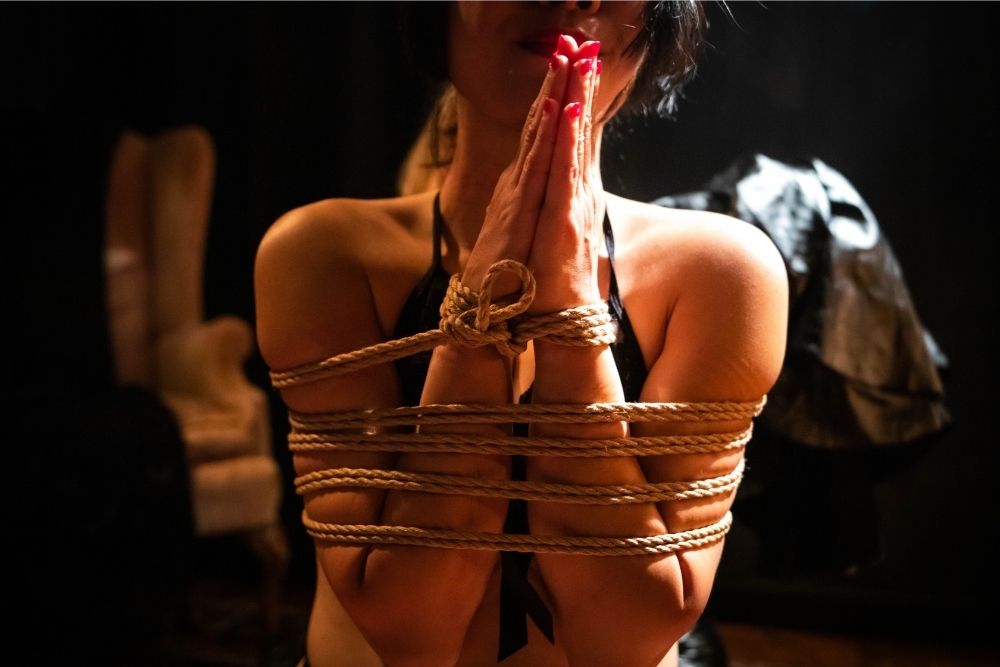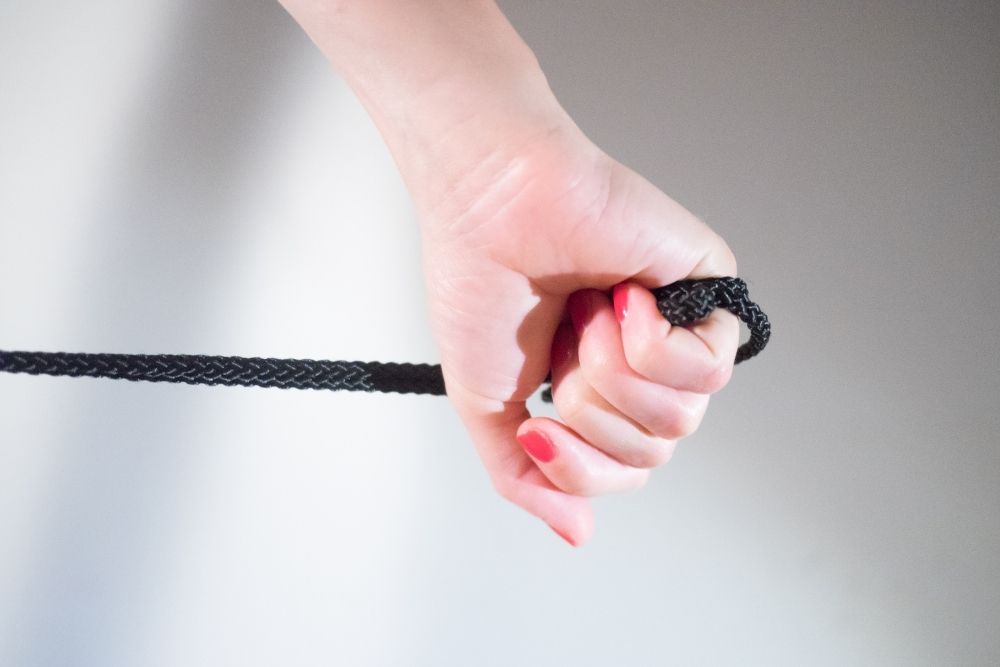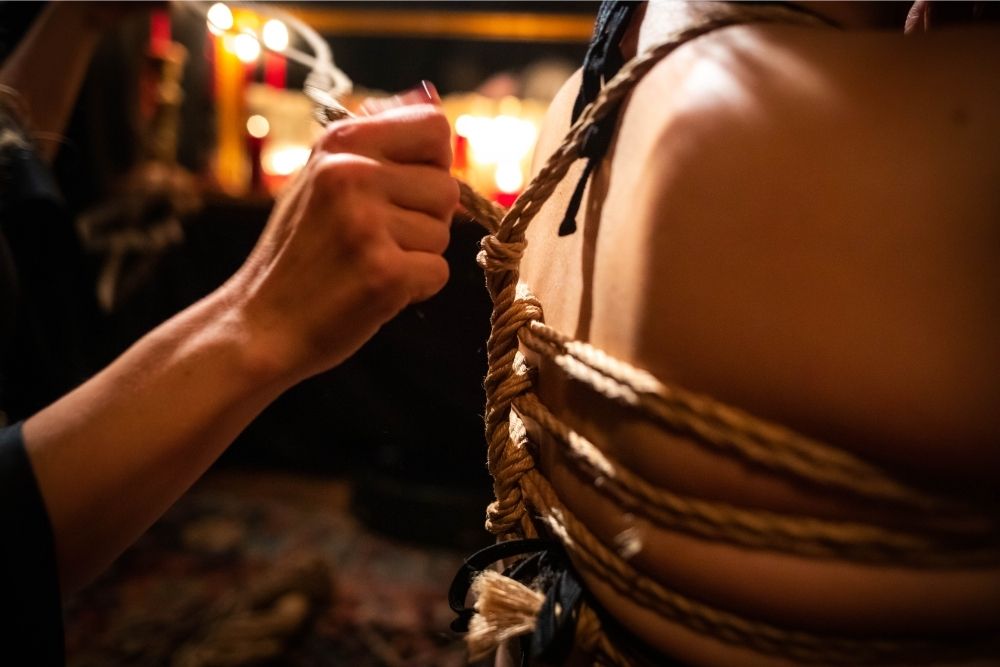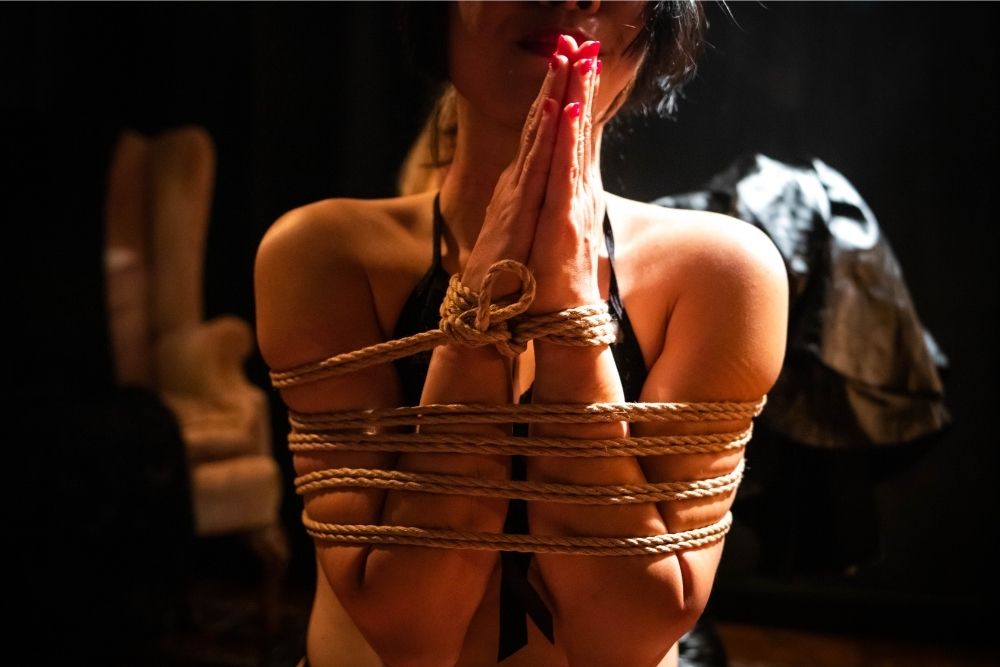The acronym ‘BDSM’ stands for Bondage and Discipline, Dominance, and Submission, and Sadism and Masochism.
Represented by the first letter in this acronym, bondage is a key element of BDSM. One of the roles involved in bondage, and BDSM as a whole, is that of the rigger.
A rigger in BDSM is somebody who uses a rope to bind another person, either for functional (and sometimes sexual) reasons or artistic purposes.

However, the different types of riggers and the process of entering into this area of BDSM are too many to cover in a short definition. That’s why we’ve written this guide!
Read on to find out exactly what a BDSM rigger is and the steps involved in becoming one!
What Is A Rigger?
As we mentioned earlier, a rigger in BDSM is defined as a person who ties up another person using a rope.
This can be done for the purpose of functionally binding the other person or as a form of art. Contrary to what a lot of people might expect, bondage in BDSM doesn’t always have to be sexual!
For example, one person who identifies as a rigger might enjoy tying up a partner before or during sex, while another might derive purely aesthetic or emotional enjoyment from the bondage. For some riggers, rope bondage can even be an art form (think photography and performance art), or an expression of spirituality!
Riggers will often use different types of knots and suspension techniques to bind their partner(s). The partner who is being tied up is referred to as a rope bunny in BDSM terminology.
However, it’s important to note that riggers don’t necessarily need a partner to practice bondage! Although many riggers do prefer to tie up a partner, some also or exclusively enjoy using the restraints on themselves.
Becoming A Rigger
So, you’ve read our overview of the rigger in BDSM, and you’re interested in exploring the role for yourself. That’s great!
This isn’t something you should just rush into, though. Before you can start using the ropes, you have to start learning those ropes – literally and figuratively.
Here are the steps you should take if you want to become a rigger:
Step 1: Get Learning!
There’s a lot to learn before you can become a skilled rigger.
Before you consider engaging in rope bondage with a partner, you should make sure that you’re as informed and prepared as possible to provide a safe and enjoyable bondage experience.
As a beginner, you’ll want to start by learning some basic knots and bondage techniques, such as the single-column tie. As you practice these by yourself (which you should always do before you use your new skills on a partner), you’ll eventually be able to master more complicated designs.
In addition to learning about bondage techniques, it’s your responsibility as a rigger to learn about human anatomy. Safety is crucial, so you need to know how joints, muscles, and circulation work.

Step 2: Find A Partner (If You Want)
Unless you would prefer to use ropes and restraints on yourself (which is also totally fine), you will need to find a partner who is interested in being a rope bunny.
If you’re in a relationship, this is something you will need to have an open and honest discussion about with your partner(s). Find out their thoughts on rope bondage, if you don’t know already, and explain why you would like to try it.
For example, let your partner know whether you view bondage as a sexual, emotional, artistic, or spiritual experience and give examples of the kinds of bondage you would like to try. This is information a partner needs in order to give informed consent to the experience.
If you are not in a relationship but would still like to find a partner to practice rope bondage with, there are BDSM-friendly dating sites out there! Just make sure to stay safe when meeting new partners, as you would when using any dating site.
Step 3: Establish Boundaries
Once you and your partner have agreed to practice bondage in any form, it’s important that you both establish your boundaries.
This involves discussing the roles you both feel comfortable playing outside of ‘rigger’ and ‘rope bunny’. For example, just because you are the rigger does not necessarily mean you have to act as the dominant. Similarly, not all rope bunnies enjoy being submissive. One or both of you might be what’s known as a switch, where you like to switch between roles.
At this point, you should also establish which acts (sexual or otherwise) you and your partner are comfortable with and make it clear if any activities are off the table. If you know there is something you’d like to try, ask your partner how they feel about it. That includes the use of any toys and the involvement of other kinks or fetishes.
Now is also a good time to decide on a safeword. This should be a word that wouldn’t come up in the scenario normally (so don’t choose ‘rope’!) and that you can both remember.
Step 4: Enjoy, But Be Safe
Once you and your partner are on the same page and have all the gear you need (please only buy high-quality, body-safe rope from reputable manufacturers!), you’re good to go!
While this should be an exciting time for both of you, you should be careful and go into this experience with safety at the forefront of your mind.
Make sure that you communicate with each other at every stage, and monitor your rope bunny for any signs of compromised circulation or airflow. Never leave a person in restraints alone, and keep a cutting implement nearby in case you need to release your partner quickly.
Step 5: Aftercare
At the end of your bondage experience, it’s important to practice both physical and emotional aftercare, especially (but not exclusively) if you practice bondage in a sexual capacity.
Although some people might assume that the rigger would be the only partner providing aftercare, this should be a two-way street!
Bondage can be physically and emotionally impactful for both the rigger and the rope bunny, so you should both check in with each other to make sure neither of you is in (unwanted) pain or feeling uncomfortable in any sense.
Emotional aftercare could simply take the form of exploring any thoughts or feelings brought up by the experience and working through them together. It could also involve words of comfort, love, or reassurance, or even just cuddling.
On the physical side, aftercare might include eating and rehydrating, a warm bath, a massage, and tending to any bruises, marks, or wounds.

Step 6: Keep Communication Open
Moving forward, you should make sure that the channels of communication between yourself and your partner(s) stay open regarding BDSM.
If one of you feels that they want to explore something further or try something new, this should be communicated ahead of time.
However, it’s also important that you both feel comfortable communicating during your BDSM experiences so that you stay on the same page throughout.
Summary
The rigger is a versatile role within the context of BDSM that carries with it a lot of responsibility. It involves the bondage of a person using ropes for sexual, emotional, spiritual, or artistic enjoyment.
If you are interested in becoming a rigger, you must do your due diligence and educate yourself on the proper techniques for rope bondage and the relevant anatomy beforehand.
Remember, being a rigger doesn’t mean you need to be tied down (excuse the pun) to assume gender or power dynamics. The important thing is to communicate openly with your partner to create a safe, consensual, and mutually-fulfilling bondage experience.





